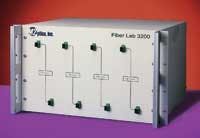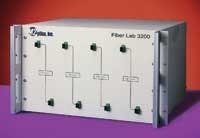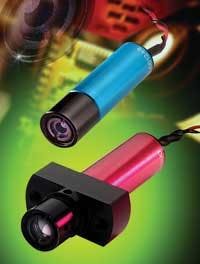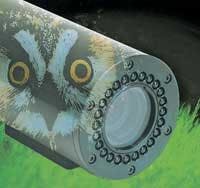Intel claims breakthrough in solid-state laser technology
Scientists at Intel Corp. in Santa Clara, Calif., say they are using standard silicon manufacturing processes to create a continuous-wave (CW) silicon laser to help bring affordable, quality lasers and optical devices to military, aerospace, mainstream computing, communications, and medical applications, Intel officials say. Researchers are using the Raman effect and silicon’s crystalline structure to amplify light as it passes through the silicon. The experimental chip produces a continuous laser beam when infused with light from an external source. “Fundamentally, we have demonstrated for the first time that standard silicon can be used to build devices that amplify light,” says Mario Paniccia, director of Intel’s Photonics Technology Lab. “The use of high-quality photonic devices has been limited because they are expensive to manufacture, assemble, and package.” Intel officials reported the findings in the Feb. 17 edition of Nature magazine. For more information contact Intel online at www.intel.com/go/sp.
M2 Optics offers fiber optic test facility
A fiber-optic field-simulation test instrument to simulate field applications exactly is available from M2 Optics Inc. in San Marcos, Calif., with a variety of connector interfaces and fiber types. The Fiber Lab 3200 has standard SC/APC connectors on the front panel, and spools of fiber that provide 1, 2, 4, or 8 decibels of real fiber attenuation in each of four attenuation areas. This instrument, which can eliminate fiber crimping and breakage, enables users to connect the spools in series with short patch cords to simulate field applications. For more information contact M2 Optics online at www.m2optics.com.
Photonic Products adds TTL modulation to photon devices
Leaders of Photonic Products Ltd. in Bishops Stortford, England, are adding TTL modulation options to their company’s Photon Module range of laser-diode modules. The TTL modulation input will accept signals from DC to 100-kHz minimum. Modulation options are available on all Photon PM and Photon Plus PPM laser modules with wavelengths from 635 to 830 nanometers, and output powers from 0.9 to 32 milliwatts. For more information contact Photonic Products online at www.photonic-products.com.
Laser Diode earns ISO 9001:2000 certification
Laser Diode Inc. of Edison, N.J., earned certification to the ISO 9001:2000 standard based on the company’s quality management system for the design and manufacture of optoelectronic devices. Laser Diode, a unit of Tyco Electronics manufactures optoelectronics for military, industrial, medical, and telecommunications. For more information contact Laser Diode online at www.laserdiode.com.
LasersCubed touts new high-power optical fiber
Researchers from LasersCubed Inc. in Chicago are working on a new design for high-power optical fiber that they say will provide substantial enhancement to high-power laser weapons and laser radar sensing systems. Still, “fiber lasers have been precluded from some of the most critical applications because of the way the laser light interacts with an acoustic wave within the fiber, significantly diminishing their output power,” says Dr. Peter Dragic, LasersCubed chief technology officer. “We’ve figured out a way to use the acoustic wave against itself and preserve the purity of the laser.” Researchers from LasersCubed and University of Michigan showed this approach to destroy the acoustic waves can produce at least six times more power over traditional fiber designs. Fiber-laser power can be scale to destroy targets such as nuclear missiles. LasersCubed technology potentially will enable lasers to produce well over 250,000 Watts. For more information contact the company online at www.laserscubed.com.
Kappa Opto-Electronics offers light-sensitive camera
Officials at Kappa Opto-Electronics Inc. in Monrovia, Calif., are offering the Kappa NVS camera system that features 12-bit digital signal processing, high resolution, and high signal-to-noise ratio. The NVS system is for sophisticated surveillance tasks and as an optical aide in vehicles for special purposes such as hazardous materials transporters or ambulances. The combination of the Sony Exview CCD sensor and the Kappa circuit arrangement achieves the camera’s sensitivity to light. The camera also provides a relatively clear view through fog, haze, smoke, or rain. The integrated infrared LED ring light uses nonvisible light waves. For more information contact Kappa Opto-Electronics online at www.kappa-vision.com.
High-power multimode diode bar
Experts at Bookham in Zurich, Switzerland, have developed a 9xx-nm 120-W, CW multimode laser-diode bar that offers a significant increase in power for pumping solid-state disk and fiber lasers, as well as direct applications of laser-diode output. The lasers have enough power for military/aerospace applications ranging from laser warning and targeting to intersatellite communications. They can also be used in materials processing, marking and printing, and medical applications. For more information contact Bookham online at www.bookham.com.






